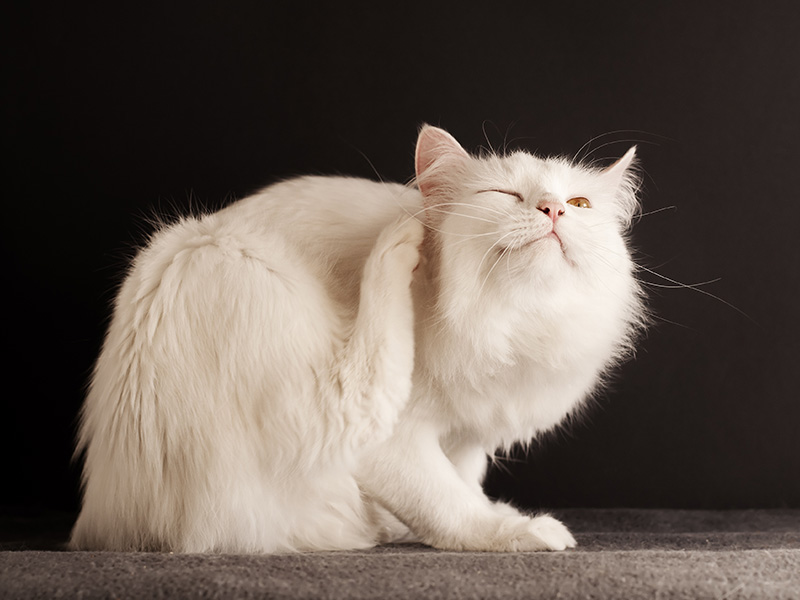What is Asthma?
Asthma is a recurring condition that causes inflammation and constriction of airways in the lungs. In cats, the symptoms of asthma can range from a persistent, daily cough and possibly wheezing to severe respiratory distress causing a life-threating event. Treatment is focused on relieving and preventing airway constriction. Feline Asthma is very similar to human asthma.
How is the diagnosis made?
Cats with asthma can experience a great deal of difficulty moving air in and out of the lungs due to the constricted airways. They can experience very shallow, rapid breaths while their abdomen appears to be working very hard to move the air in and out. In severe situations, the cat may even need to open their mouth to breath. This is a cat with respiratory distress and requires immediate veterinary attention.
Radiographs (X-rays) are the next step to make a diagnosis of feline asthma, once the patient is stable enough for them to be taken. As inflammation and mucus build up within the airways, it causes the walls of the airways to appear thickened. These can be seen in the radiographs.
Treatment
With Asthma, the underlying problem is constriction of the airways. It is important to control the inflammation when treating Asthma. In an emergency situation, epinephrine can reverse the asthmatic crisis within about 15 minutes. However, corticosteroids are administered for long term management. This can be done either orally or by inhaler. Treatment is usually started with oral corticosteroids (prednisolone) but long term use of this type of medication has side effects. The use of inhalers minimizes the side effects of the drugs to the rest of the body while maximizing the drug in the lungs. However, cats obviously cannot be told when to inhale and they tend to object to the ‘puff’ delivered by the inhaler. Interestingly, these same problems also existed for human infants diagnosed with asthma and a device called a pediatric spacer was invented. This is a tubular chamber with the inhaler on one end and a face mask on the other end. The contents of the inhaler is ‘puffed’ into the chamber and the infant simply breaths in the contents of the chamber. This device has been adapted for our feline patients with great success. The cat takes 10 breaths from the face mask to be properly dosed. Corticosteroid inhalers, of which Flovent is the most popular, are typically used every 12 hours.
Occasionally, additional medications, including oral bronchodilators, are also required.




Recent Comments